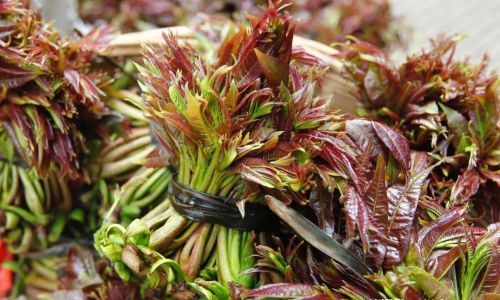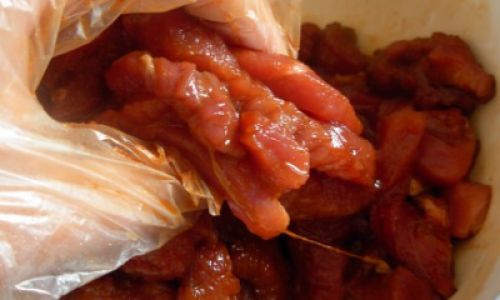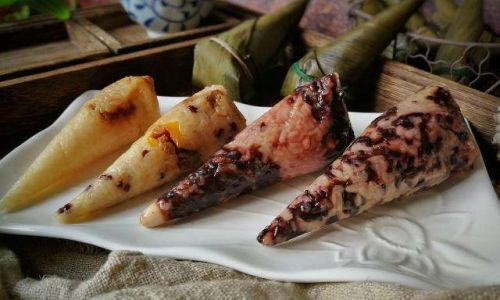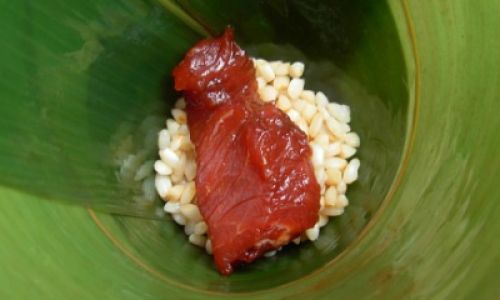Table of content
Introduction
Toona sinensis, commonly known as Chinese toon or simply toon, is a tree native to China that has been valued for its edible leaves and tender shoots for centuries. The unique flavor and nutritional benefits of toon leaves make them a popular ingredient in various Asian cuisines, particularly in China and Korea. However, harvesting toon at the optimal stage of ripeness is crucial to ensure maximum flavor and nutritional value. This article aims to provide a comprehensive guide on how to determine if toon leaves and shoots are ripe, covering various aspects such as visual inspection, touch, and even the timing of harvest.
Understanding Toon Sinensis
Before diving into the specifics of determining ripeness, it’s essential to understand the basic characteristics of toon sinensis. This deciduous tree grows to a height of about 10-20 meters and is characterized by its distinctive, aromatic leaves. The leaves are used in cooking, primarily when they are young and tender, as they develop a stronger flavor and texture as they mature. The shoots, which emerge in spring, are also highly valued for their delicate taste and texture.
The Importance of Harvest Timing
Timing is everything when it comes to harvesting toon leaves and shoots. Harvesting too early can result in a lack of flavor and nutritional content, while harvesting too late can lead to bitter-tasting leaves and woody shoots. Therefore, knowing when to harvest is crucial to obtaining the best quality toon for culinary use.
Visual Inspection: The Key to Ripeness
One of the most straightforward methods to determine if toon is ripe is through visual inspection. Here are some key visual cues to look for:

Leaf Color
The color of toon leaves can provide valuable insights into their ripeness. Young, tender leaves are typically a bright green color, with a slight reddish hue in some varieties. As the leaves mature, they may develop a darker green color and lose their vibrant hue. While darker green leaves are still edible, they tend to have a stronger flavor and may be less tender.
Leaf Size and Shape
The size and shape of toon leaves can also indicate their ripeness. Younger leaves are usually smaller and more delicate, with a tender texture. As the leaves mature, they grow larger and may develop a more rugged texture. It’s generally best to harvest leaves when they are still small and tender, as they offer the best flavor and texture for cooking.
Presence of Flowers
The presence of flowers on the toon tree is another indicator of ripeness. Toon trees typically bloom in the spring, with flowers appearing on the same branches as the leaves. While the flowers themselves are not edible, their presence can signal that the leaves on the same branch are at their peak ripeness. Harvesting leaves from branches with flowers can often yield the best results.
Leaf Texture
The texture of toon leaves can also provide clues about their ripeness. Younger leaves have a smooth, silky texture, which makes them ideal for cooking. As the leaves mature, they may develop a rougher texture, with a tougher outer layer. This change in texture can make the leaves less appealing for culinary use.
Touch: Feeling for Ripeness
While visual inspection is a valuable tool, sometimes the best way to determine if toon is ripe is by touching the leaves. Here are some tips for using touch to assess ripeness:
Leaf Firmness
The firmness of toon leaves can indicate their ripeness. Younger leaves are typically softer and more tender, with a delicate texture. As the leaves mature, they may become firmer and less tender. It’s generally best to harvest leaves when they are still soft and tender, as they will offer the best eating experience.
Leaf Flexibility
The flexibility of toon leaves can also provide insights into their ripeness. Younger leaves are more flexible and can be easily bent without breaking. Mature leaves, on the other hand, may be less flexible and more prone to breaking. Harvesting leaves when they are still flexible can help ensure that they retain their delicate texture during cooking.

Leaf Thickness
The thickness of toon leaves can also be a useful indicator of ripeness. Younger leaves are typically thinner and more delicate, while mature leaves may be thicker and more robust. Thinner leaves are generally preferred for cooking, as they cook more quickly and retain their flavor better.
Timing: The Seasonal Cycle of Toon
In addition to visual inspection and touch, understanding the seasonal cycle of toon sinensis can also help determine the best time to harvest. Here are some key points to consider:
Spring Harvest
Spring is the prime time for harvesting toon leaves and shoots. The tree typically produces new shoots and leaves in the early spring, which are at their peak ripeness and flavor. Harvesting during this time can yield the best quality toon for culinary use.
Summer Growth
As summer approaches, toon trees continue to grow and produce new leaves. However, these leaves may be more mature and have a stronger flavor compared to spring leaves. While they are still edible, they may require more cooking time and seasoning to balance their flavor.
Autumn and Winter Dormancy
In autumn and winter, toon trees enter a dormant phase, with leaves falling off and growth slowing down. Harvesting during this time is generally not recommended, as the leaves may be too old and bitter to use in cooking.
Conclusion
Determining if toon sinensis is ripe involves a combination of visual inspection, touch, and understanding the seasonal cycle of the tree. By paying attention to leaf color, size, shape, texture, and firmness, as well as the presence of flowers and the time of year, you can harvest toon leaves and shoots at their optimal stage of ripeness. This will ensure that you obtain the best quality toon for culinary use, with maximum flavor and nutritional value. Remember, the key to successful harvesting is patience and attention to detail, so take your time and enjoy the process of discovering the perfect ripeness of toon sinensis.






0 comments